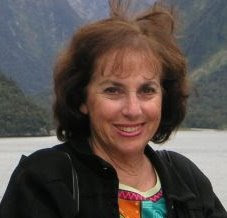My daughter died the same year as her 10th
annual high school reunion. I had some choices to make at that time, and those
choices would define my life at that time and in the future.
Marcy was looking forward to this reunion. She would
be able to see friends she hadn’t kept in contact with for one reason or
another. She could tell them about her successful career as the publicity
director for the L.A. Music Center. She could talk about her recent wedding and
how proud she was of her husband and their life together. And she could relive
those exciting high school memories with those she knew. But it was not meant
to be. She died two months before the reunion. I requested some mention of her
be made in the reunion booklet, and so the last page in the booklet simply said
“In Memory of…” and the year of her death, 1994, with a picture, nothing more.
I was hurt and disappointed that there was no write-up but said nothing to the
school or reunion committee. She had been in many clubs, won honors in the
debate club and was either in or behind the scenes in all school plays. I would
have done a short write-up, if asked, but no one did, I felt hurt that
her classmates didn’t care enough to honor her life and mention some of her accomplishments.
Years later, I had my 50th high school
reunion. My curiosity urged me to go and see those I had associated with so
long before, but I was afraid of the inevitable question, “How many children do
you have?” I knew I would stumble on the answer. Of course, all conversation would
then stop . The one who asked wouldn’t know what to say after “I’m so sorry.”
And I would feel awkward responding, “Thank you.” I would want to say more
about her but knew it probably wasn’t appropriate since the person who asked never knew
her and would be in a hurry to change the conversation. I’m sure others told stories of great sorrow and pain who did attend the 50th reunion,
but perhaps it was easier for them in some way. For me, it wouldn’t have been.
So I avoided the entire scenario that I conjured up in
my mind by not going to the reunion at all. During that same period of time I
had received a call from the alumni group of my college sorority saying they
were putting out a hard covered book of all the alumni, names, addresses,
spouse names and of course, any children names and ages. When that question
came up, “How many children do you have?” I paused for a short time, then answered,
“None.” A few minutes after hanging up, I felt so guilty for not acknowledging
my wonderful daughter, I called them back and explained why I had said that.
Very calmly they said, “Not a problem, we’ll change it immediately.” So I gave
them Marcy’s information, and I had this great big smile on my face when the book
came out months later, and I saw it all there.
From that time forward I acknowledge everything about
my daughter to anyone who will listen. We want to talk about our children and
their lives, however short those lives may have been. We don’t want to forget
them, and we want others to know and remember them also.
